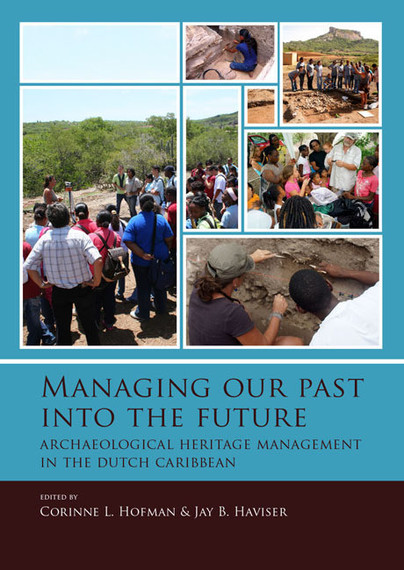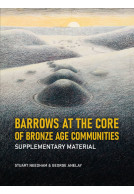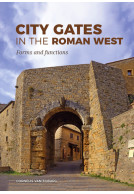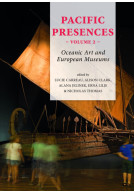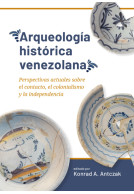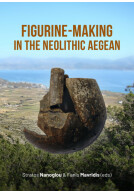Google Books previews are unavailable because you have chosen to turn off third party cookies for enhanced content. Visit our cookies page to review your cookie settings.
Managing our past into the future (Paperback)
Imprint: Sidestone Press
Pages: 356
ISBN: 9789088903250
Published: 15th June 2015
Script Academic & Professional
Pages: 356
ISBN: 9789088903250
Published: 15th June 2015
Script Academic & Professional
You'll be £9.95 closer to your next £10.00 credit when you purchase Managing our past into the future. What's this?
+£4.99 UK Delivery or free UK delivery if order is over £40
(click here for international delivery rates)
Need a currency converter? Check XE.com for live rates
(click here for international delivery rates)
Need a currency converter? Check XE.com for live rates
Caribbean archaeological heritage is threatened by natural impacts but also increasingly by economic developments, often resulting from the tourist industry. The continuous construction of specific projects for tourists, accompanied by illegal practices such as looting and sand mining, have major impacts on the region’s archaeological heritage. The geopolitical and cultural diversity of the Caribbean, the general lack of awareness of island histories and multiple stakeholders involved in the preservation process, have in many cases slowed down the effective enforcement of regulations and heritage legislation.
The development of archaeological heritage management (AHM) in the Dutch Caribbean islands started slowly in the early years of their semi-autonomy within the Kingdom of the Netherlands from 1954 onwards. With the dissolution of the Netherlands Antilles on 10 November 2010, Curaçao and St. Martin obtained a more autonomous status within the Kingdom, similar to Aruba has since 1986. Simultaneously, Bonaire, Saba and St. Eustatius became special overseas municipalities of the Kingdom of the Netherlands. Consequently, these three islands now fall under Dutch regulations for cultural resource management. Irrespective of these geopolitical changes, AHM has been developing on the six islands over the past 25 years, partly because of the active role of localized island-specific archaeological institutions.
This volume provides a background to the history of archaeological research in the Dutch Caribbean and compiles a number of compliance archaeology projects that have been carried out under and in the spirit of the Valetta Treaty. Furthermore, this volume represents a unique contribution to AHM in a wider regional perspective, with its discussion of the successful creation of localized community-based archaeological heritage associations which serve as an excellent model for all island communities in the Caribbean.
Contents
Introduction: the current status of archaeological heritage management (AHM) in the Dutch Caribbean
Corinne L. Hofman and Jay B. Haviser
A review of archaeological research in the Dutch Caribbean
Jay B. Haviser and Corinne L. Hofman
Achieving sustainable Archaeological Heritage Management in Aruba
Raymundo A.C.F. Dijkhoff and Marlene S. Linville
Heritage Management on Bonaire and Curaçao: a step towards an integral approach to heritage
Richenel Ansano and Claudia T. Kraan
Heritage Management and the Public Sphere: doing archaeology on Saba
Ryan Espersen
Skeletons in the closet: Future avenues for the curation of archaeological human skeletal remains in the Dutch Caribbean and the region as a whole.
Hayley L. Mickleburgh
Community Archaeology as an essential element for successful Heritage Management
Jay B. Haviser
Community engagement, local identity and museums: A review of past heritage initiatives and recent developments on the island of Saba
Helena Boehm
Amateur archaeological research on Curaçao
François van der Hoeven and Fred M. Chumaceiro
Archaeological assessment in compliance with the Valetta Treaty: Spanish Water, Curaçao
Menno L.P. Hoogland and Corinne L. Hofman
Early Valetta Treaty application at Slagbaai-Gotomeer, Bonaire
Jay B. Haviser
Archaeological research at Bethlehem, St. Maarten: an early Valetta Treaty project in the Dutch Windward Islands
Menno L.P. Hoogland, Corinne L. Hofman and R. Grant Gilmore III
“An emporium for all the world”: commercial archaeology in Lower Town, St. Eustatius
Ruud Stelten
Three early examples of Valetta Treaty application in the Dutch Windward Islands
Jay B. Haviser
An archaeological assessment of Cul-de-Sac (The Farm), St. Eustatius: the Nustar project
R. Grant Gilmore III, Menno L.P. Hoogland and C.L. Hofman
Archaeology on St. Eustatius: heritage management of an 18th-century slave village at Schotsenhoek plantation
Ruud Stelten
Heritage Management on St. Eustatius: the Dutch West Indies headquarters project
R. Grant Gilmore III and Louis A. Nelson
Mapping sites, mapping expectancies, mapping heritage: The archaeological maps of St. Eustatius, Saba and Sint Maarten
Maaike S. de Waal, Jochem Lesparre, Jay B. Haviser, Menno L.P. Hoogland, Ryan Espersen and Ruud Stelten
Into the future for Archaeological Heritage Management in the Dutch Caribbean
Corinne L. Hofman and Jay B. Haviser
Other titles in Sidestone Press...







